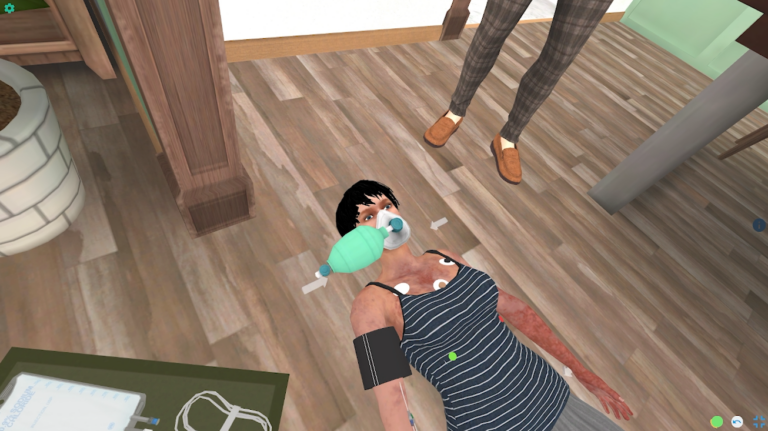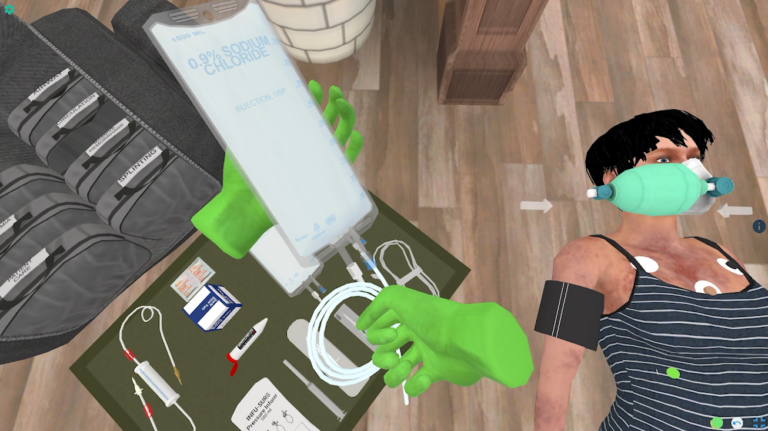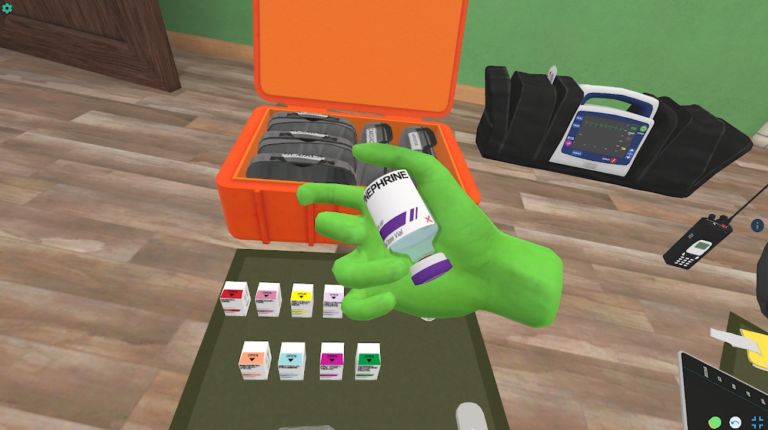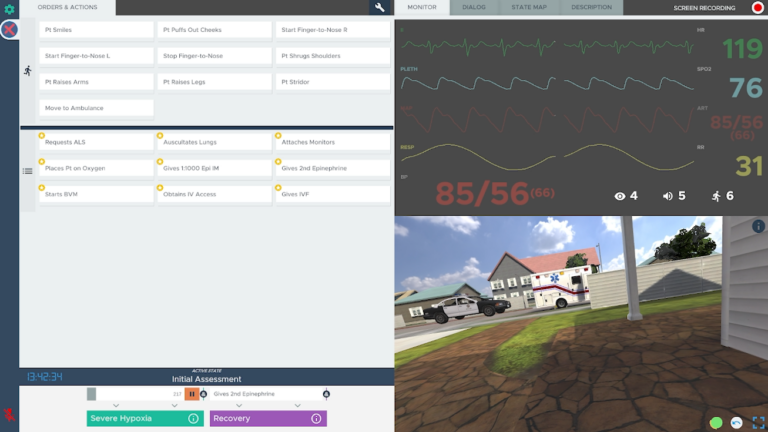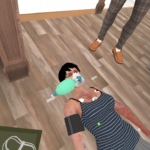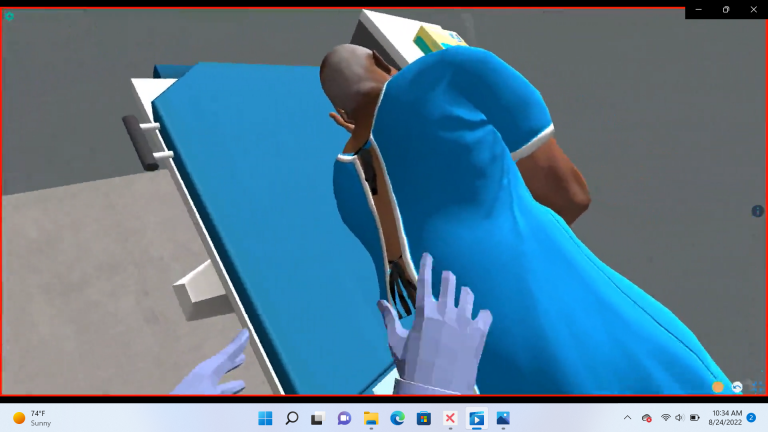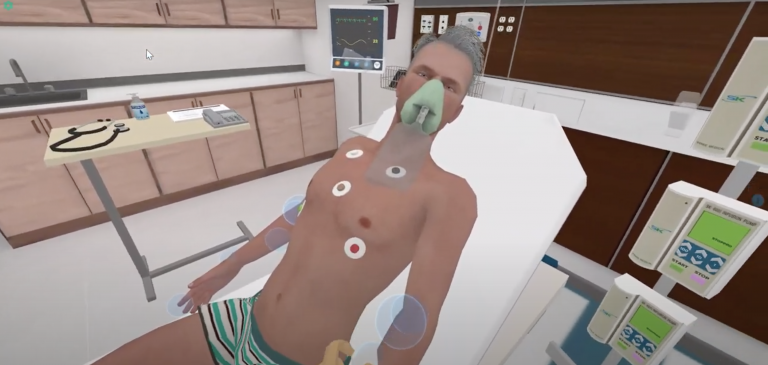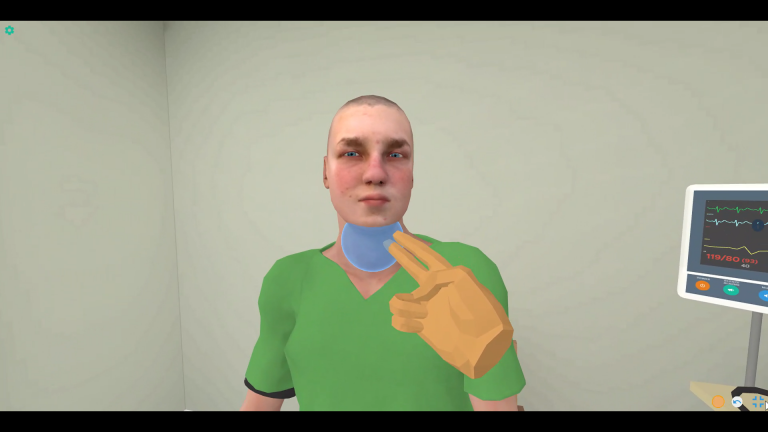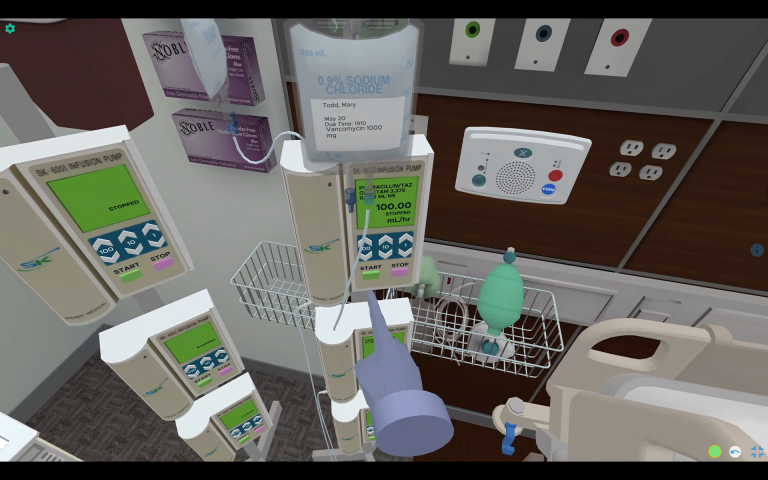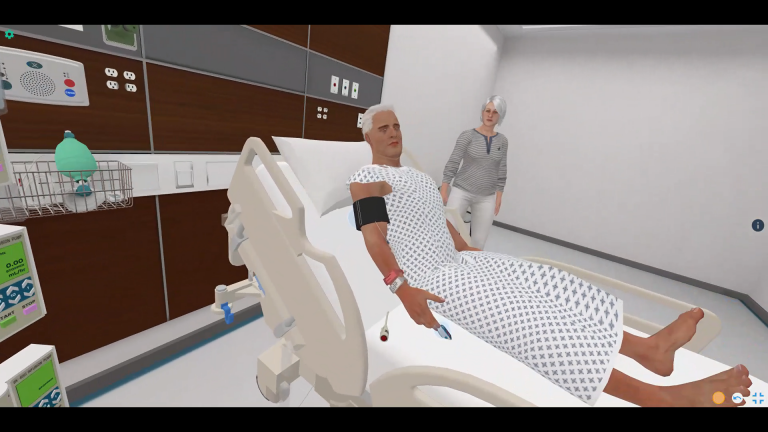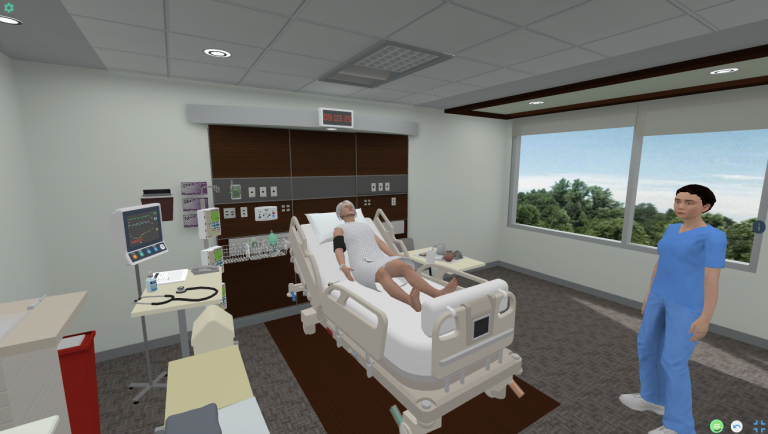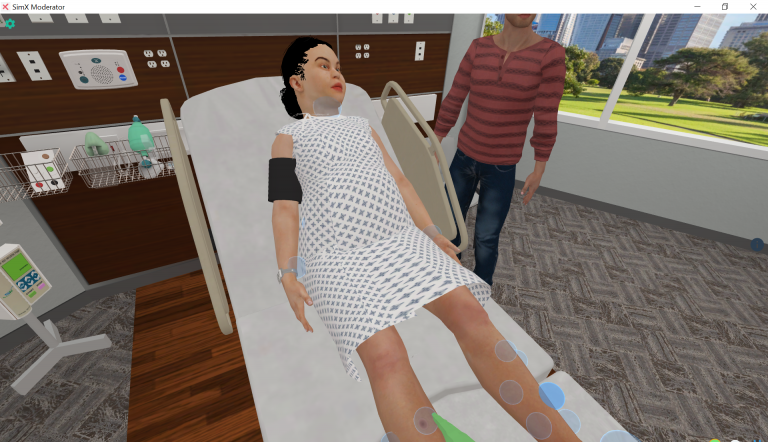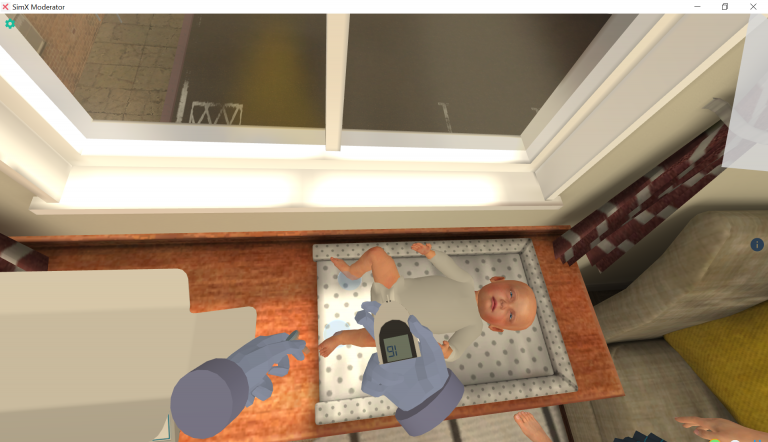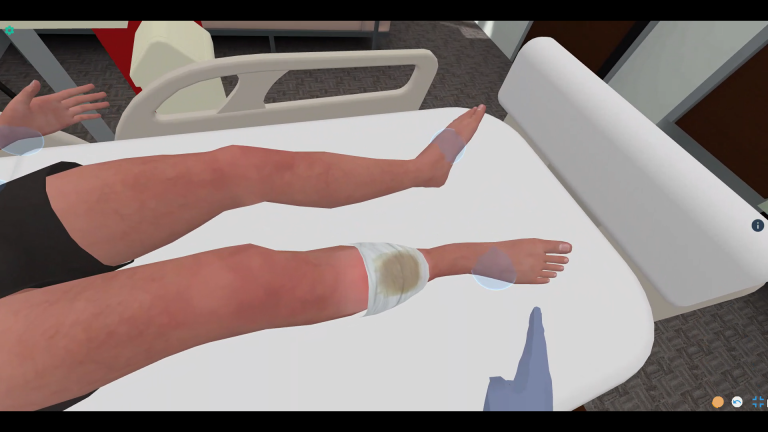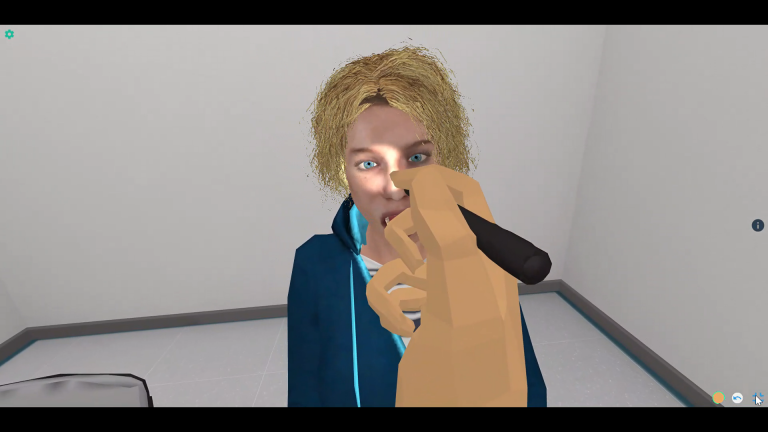Learner will arrive on-scene to find a 53-year-old female patient lying on the floor next to a dining table experiencing significant respiratory distress. A family member says the patient was eating take-out food and suddenly had difficulty breathing. The patient has a known severe peanut allergy. Learner will perform an initial assessment on scene identifying the patient as having almost no air movement and significant stridor, with lip swelling and diffuse rash. Patient will require two doses of IM epinephrine 1:1,000 to stabilize. Initial vital signs are HR 120, BP 85/56, RR 32 (minimal air movement with stridor), SPO2 75%. This care should be initiated on scene and continued en route to the hospital, and the learner should give a report to the receiving team.
For advanced learners (ALS, SL4) attempts at an oral airway will fail due to airway edema, and the patient will require a cricothyrotomy to secure the airway if they do not appropriately give two doses of epinephrine.
Learning Objectives
– Assesses scene, identifying any potential safety concerns, number of patients, presence of bystanders, and additional resources available
– Conducts primary survey and obtains vital signs with attention to the following:
a. Determines level of consciousness and identifies mental status impairment
b. Identifies any signs of airway obstruction, hypoxia, or any observable breathing difficulties
c. Identifies any profuse bleeding, signs of decreased or absent circulation, or any pulse deficits in extremities
– Performs immediate interventions to address concerns identified during the primary survey
– Determines priority of transport
– Conducts a secondary survey to gather additional pertinent HPI and PMH and conduct a focused physical exam
– Performs any necessary medical interventions to ensure patient stability and safety during transport
– Contacts Medical Direction when indicated
– Provides verbal report summarizing patient encounter
– Evaluates a patient suffering from respiratory arrest secondary to anaphylaxis
– Efficiently diagnoses angioedema causing airway compromise, and performs an immediate surgical airway
MINIMUM:
OS: Windows 10
Processor: Intel Core i5-2300 | AMD FX-4350
Memory: 4 GB RAM
Graphics: Nvidia GeForce GTX 2060
DirectX: Version 11
Storage: 12 GB available space
RECOMMENDED:
OS: Windows 10
Processor: Intel Core i7-2300 | AMD FX-4350
Memory: 8 GB RAM
Graphics: Nvidia GeForce GTX 3060
DirectX: Version 11
Storage: 12 GB available space
Interested in this scenario?
Sign up to talk with a member of the SimX team today!

